Navigating the complexities of sea freight shipping from China to Jordan can be a daunting task for businesses looking to import goods. With its cost-effectiveness and capacity to handle large volumes, sea freight is a preferred method for international logistics. This step-by-step guide will walk you through the essential processes, benefits, and documentation required for a successful shipping experience. Whether you’re familiar with the logistics landscape or exploring options for the first time, understanding the intricacies of sea freight can significantly enhance your supply chain operations and contribute to your business’s success.
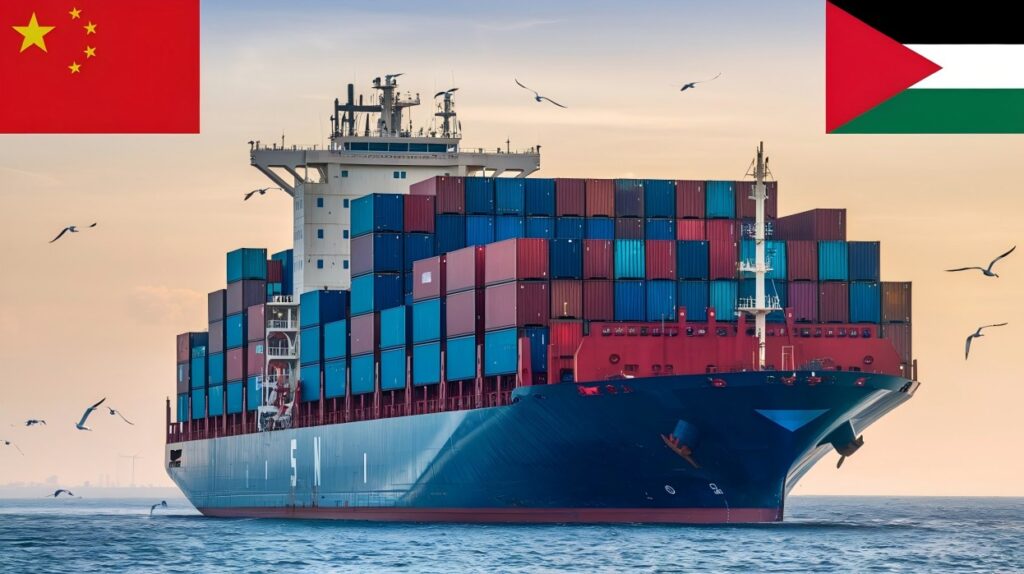
Understanding Sea Freight Shipping From China to Jordan
Sea freight shipping is the process of transporting goods via ocean vessels, making it a preferred method for international logistics, especially for bulk shipments. This mode is characterized by its cost-effectiveness and ability to handle large volumes of cargo. In the context of shipping from China to Jordan, sea freight serves as a reliable option for various industries, including electronics, textiles, machinery, and more. Given the vast distance and the nature of goods often imported from China, opting for sea freight ensures that businesses can manage their supply chains effectively.
Benefits of Sea Freight from China to Jordan
The advantages of utilizing sea freight from China to Jordan are numerous and can considerably impact both the cost and efficiency of shipping operations. Here are some of the notable benefits:
| Benefits | Details |
|---|---|
| Cost-Effectiveness | Generally, sea freight rates are lower compared to air freight, making it ideal for large shipments. |
| Capacity | Vessels can accommodate large volumes and heavy weights, allowing for bulk shipping of goods. |
| Environmental Impact | Shipping by sea produces a lower carbon footprint per ton of cargo compared to air transport. |
| Diverse Cargo | Suitable for a wide range of products, including hazardous materials and oversized items. |
| Flexibility in Scheduling | Regular shipping schedules can accommodate various timelines, ensuring flexibility for businesses. |
These benefits make sea freight a strategic choice for companies looking to import goods from China to Jordan at a manageable cost while maintaining an efficient supply chain.
Types of Sea Freight Services
When shipping goods from China to Jordan, understanding the different types of sea freight services is essential. The two main categories are:
-
Full Container Load (FCL):
This service involves renting an entire container for your shipment. It is most cost-effective when you have enough cargo to fill the container, minimizing shipping costs per unit.
-
Less Than Container Load (LCL):
LCL shipping allows you to share container space with other shippers. It is beneficial for smaller shipments where full container space is not utilized. While it can be more expensive per unit, it provides flexibility for smaller businesses.
Additionally, dedicated services such as door-to-door shipping can be arranged, which includes both transportation to the port and delivery to the final destination in Jordan.
Preparing for Your Sea Freight Shipment
Calculating Cargo Volume and Weight
Before shipping, accurately calculating the cargo volume and weight is crucial. This information determines shipping costs and helps in selecting the appropriate shipping method. Each shipping company has specific criteria for measuring volume and weight, which can be influenced by packaging, dimensions, and cargo type. It’s essential to refer to industry standards:
Volume Calculation: Measured in cubic meters (CBM) and can be calculated using the formula:

-
Weight Calculation: Measured in kilograms (kg), ensuring compliance with the shipping company’s weight restrictions.
Understanding these metrics aids in optimizing shipping costs and ensures that the cargo adheres to regulatory standards.
Choosing Between FCL (Full Container Load) and LCL (Less Than Container Load)
Deciding between FCL and LCL is a critical consideration that hinges on the volume of goods being shipped:
-
FCL is advantageous for businesses with large shipments, as it typically leads to lower costs per unit and reduced risk of damage, given that the entire container is dedicated to one shipper.
-
LCL is suitable for smaller shipments, providing flexibility for companies unable to fill a full container. However, lead times can be longer due to consolidation processes, and costs may be higher on a per-unit basis.
A cost-benefit analysis based on your shipment size and urgency is essential for making an informed decision.
Selecting the Right Container Size
Choosing the appropriate container size is a significant aspect of the sea freight process. Containers are available in various sizes, typically 20-foot and 40-foot options:
| Container Type | Dimensions (L x W x H) | Volume (CBM) | Weight Limit (kg) |
|---|---|---|---|
| 20-foot Container | 6.06m x 2.44m x 2.59m | 33 CBM | 28,000 kg |
| 40-foot Container | 12.19m x 2.44m x 2.59m | 67 CBM | 28,000 kg |
| 40-foot High Cube | 12.19m x 2.44m x 2.89m | 76 CBM | 30,000 kg |
Selecting the right size helps in maximizing space utilization and can also reduce overall shipping costs. Consideration must be given to the nature of the goods, packaging requirements, and any restrictions applied by shipping lines.
In navigating the complexities of sea freight shipping from China to Jordan, partnering with a reliable freight forwarder like Dantful International Logistics can streamline the process. Dantful offers a range of services, including Customs Clearance, Warehouse Services, and Insurance Services, ensuring a comprehensive logistics solution tailored to your needs. Explore Dantful’s expertise in shipping from China to Jordan for a seamless international shipping experience.
Shipping From China to Middle East Countries:
- Shipping from China to Saudi Arabia
- Shipping from China to UAE
- Shipping from china to KUWAIT
- Shipping From China To EGYPT
- Shipping from China to Bahrain
- Shipping From China To Jordan
- Shipping From China To Israel
- Shipping from China to Qatar
- Shipping From China To IRAQ
- Shipping from China to Iran
Essential Documents for Sea Freight From China to Jordan
Navigating the logistics of sea freight from China to Jordan requires meticulous attention to documentation. The following essential documents are crucial for ensuring compliance, transparent communication between parties, and smooth customs clearance.
Commercial Invoice
The commercial invoice is a critical document that outlines the transaction between the buyer and the seller. It typically includes:
- The seller’s and buyer’s details
- A detailed description of the goods, including quantity and unit price
- Total value of the transaction
- Payment terms
This document serves as the primary proof of sale and is necessary for customs clearance.
Packing List
The packing list complements the commercial invoice by providing detailed information about how the shipment is packed. It should include:
- Itemized list of goods in the shipment, including dimensions and weight
- Packing methods used (e.g., boxes, pallets)
- Information on handling requirements (if any)
The packing list is essential for both customs authorities in Jordan and the logistics provider to facilitate efficient handling and inspection of the cargo.
Bill of Lading
The bill of lading (BOL) is a legal document issued by the carrier to acknowledge the receipt of cargo for shipment. It functions as:
- A contract of carriage between the shipper and carrier
- A receipt for the goods
- A document of title that can be transferred to others
The BOL is vital for cargo claim purposes and needs to be presented during customs clearance in Jordan.
Certificate of Origin
The certificate of origin certifies the country in which the goods were manufactured or produced. This document is essential for customs clearance and benefits the importer by enabling them to:
- Verify the origin of the goods for tariff purposes
- Qualify for preferential tariff rates (if applicable)
It is typically issued by the local chamber of commerce or the exporter’s country authorities.
Customs Declaration Forms
Customs declaration forms must be completed and submitted to the relevant authorities in Jordan. These forms provide information about:
- The type of goods being imported
- Their value and intended use
- Applicable duties and taxes
Accurate and timely submission of customs declaration forms is critical to avoid delays or fines during the import process.
The Sea Freight Shipping Process Step-by-Step
Understanding the detailed steps involved in sea freight shipping can significantly enhance the efficiency of your logistics operation when importing from China to Jordan.
1. Obtaining a Freight Quote and Booking
-
Providing Shipment Details to the Freight Forwarder: Begin by communicating your shipment’s specifics to your chosen freight forwarder, including dimensions, weight, commodity type, and any special handling instructions.
-
Agreeing on Shipping Terms and Rates: Review the offered rates, terms, and conditions, which may include incoterms that define the responsibilities of both parties regarding shipping and insurance.
-
Confirming the Booking: After finalizing the details, confirm the booking with the freight forwarder, ensuring that all information is accurate to avoid complications later.
2. Cargo Pick-up and Delivery to the Port
-
Arranging for Cargo Pick-up from the Supplier: Coordinate with your supplier to schedule the pick-up of the goods. The freight forwarder can assist in organizing this process.
-
Transporting the Goods to the Port of Departure in China: Ensure that the cargo is safely transported to the designated port, where it will be loaded onto the vessel.
3. Export Customs Clearance in China
-
Submitting Required Documents: Provide necessary documentation, including the commercial invoice, packing list, bill of lading, and certificate of origin, to the customs authorities in China.
-
Paying Export Duties and Taxes: Ensure that all applicable fees are paid to facilitate the export process and prevent delays.
4. Loading and Ocean Transportation
-
Loading the Cargo onto the Vessel: Confirm that the cargo is loaded securely onto the ship to avoid damage during transit.
-
Transit Time from China to Jordan: The typical transit time can vary based on shipping routes but generally ranges from 20 to 30 days. Monitoring the schedule will help manage expectations.
5. Import Customs Clearance in Jordan
-
Submitting Import Documents: Present the necessary documentation, including customs declaration forms and the bill of lading, to Jordanian customs.
-
Paying Import Duties and Taxes: Be prepared to pay the applicable import duties and taxes to clear the goods through customs.
6. Cargo Unloading and Delivery to the Final Destination
-
Unloading the Cargo at the Port of Arrival in Jordan: Upon arrival, the cargo will be unloaded at the designated port.
-
Arranging for Final Delivery to Your Warehouse or Facility: Coordinate with local logistics providers or your freight forwarder to transport the cargo to its final destination in Jordan.
Challenges of Sea Freight
While sea freight offers numerous benefits, it is not without its challenges. Recognizing these potential obstacles can help shippers prepare and respond effectively.
Longer Transit Times: Planning for Delays
Sea freight typically involves longer transit times compared to air freight, which may pose challenges for time-sensitive shipments. Shippers should account for potential delays due to port congestion, customs processes, or weather disruptions, and build buffer time into their logistics plans.
Weather-Related Risks: Ensuring Cargo Safety
Weather conditions can significantly impact shipping schedules. Storms, heavy rains, or natural disasters can cause disruptions leading to delays or even damage to the cargo. Ensuring that proper insurance services are in place can mitigate financial risks associated with weather-related incidents.
Tips for a Smooth Sea Freight Experience
To enhance the overall experience when importing from China to Jordan via sea freight, consider the following best practices:
Choosing a Reliable Freight Forwarder
Selecting a reputable freight forwarder like Dantful International Logistics is crucial for navigating the complexities of international shipping. A seasoned forwarder will provide expertise in logistics, customs regulations, and documentation, ensuring a smoother process.
Packing and Labeling Your Cargo Properly
Ensuring that goods are appropriately packed and labeled is essential for preventing damage during transit and ensuring compliance with customs regulations. Use durable packaging materials and include clear labeling for identification.
Tracking Your Shipment During Transit
Utilize tracking services offered by your freight forwarder to monitor the status of your shipment. This transparency helps in anticipating delivery times and addressing any issues that may arise during transit.
Preparing for Potential Delays or Unexpected Events
Flexibility is key in international shipping. Be proactive in preparing for potential delays by maintaining communication with your freight forwarder and having contingency plans in place to handle unexpected circumstances.
Taking these steps can lead to a more efficient and successful sea freight experience from China to Jordan, ultimately contributing to your business’s growth and success.

Young Chiu is a seasoned logistics expert with over 15 years of experience in international freight forwarding and supply chain management. As CEO of Dantful International Logistics, Young is dedicated to providing valuable insights and practical advice to businesses navigating the complexities of global shipping.










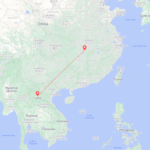


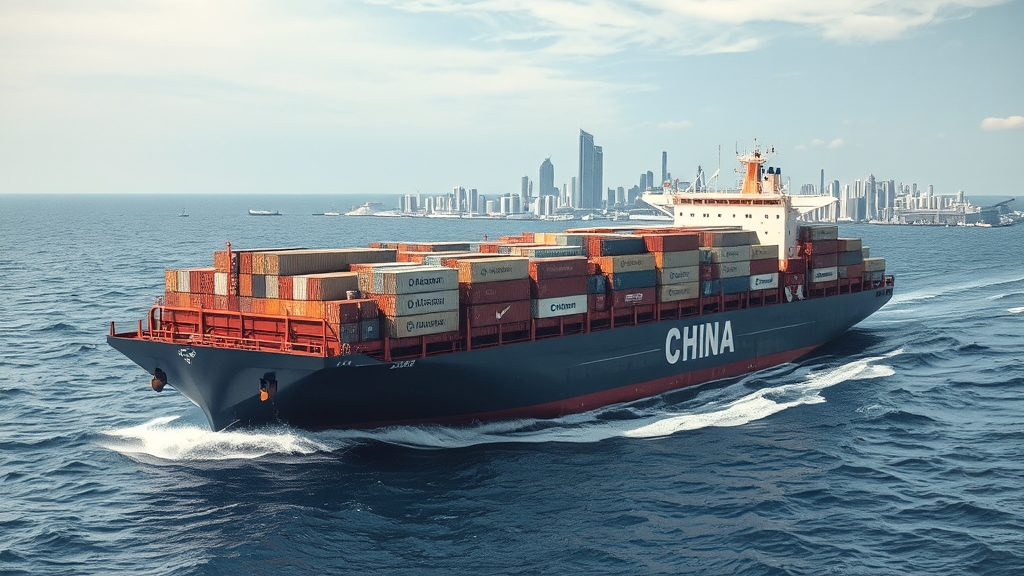
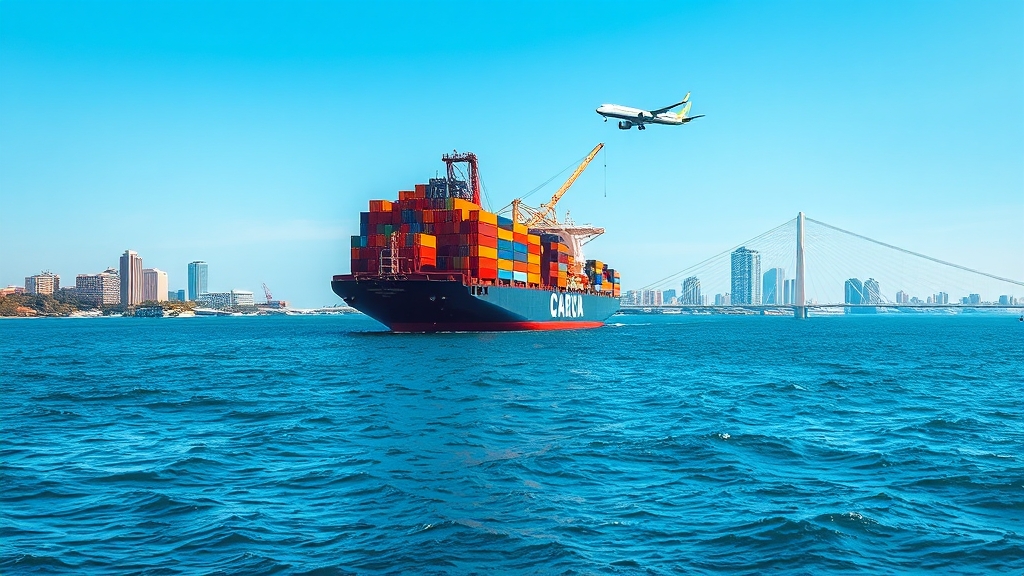
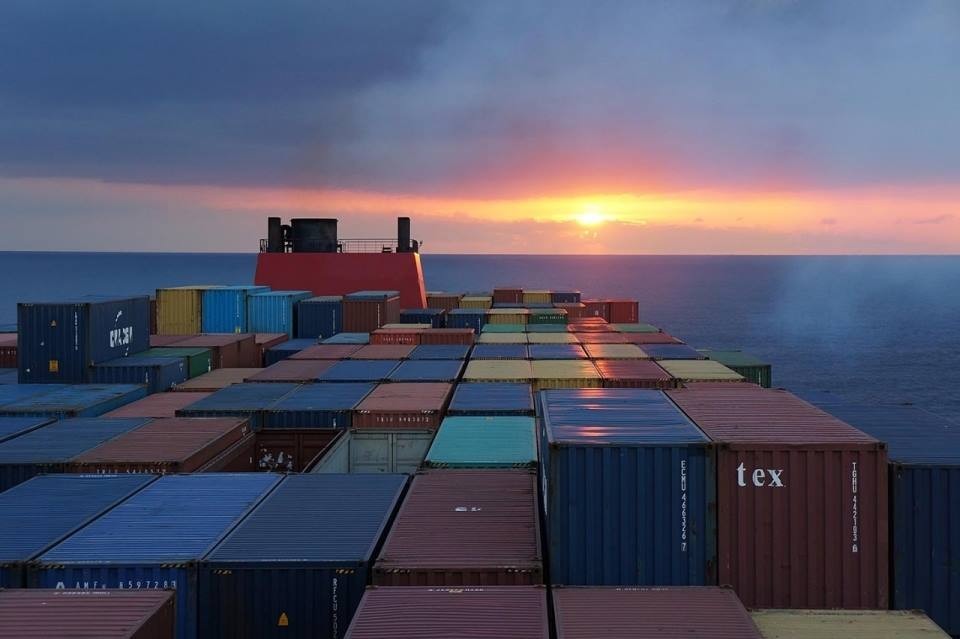





 Afrikaans
Afrikaans Shqip
Shqip አማርኛ
አማርኛ العربية
العربية Հայերեն
Հայերեն Azərbaycan dili
Azərbaycan dili Euskara
Euskara Беларуская мова
Беларуская мова বাংলা
বাংলা Bosanski
Bosanski Български
Български Català
Català Cebuano
Cebuano Chichewa
Chichewa 简体中文
简体中文 繁體中文
繁體中文 Corsu
Corsu Hrvatski
Hrvatski Čeština
Čeština Dansk
Dansk Nederlands
Nederlands English
English Esperanto
Esperanto Eesti
Eesti Filipino
Filipino Suomi
Suomi Français
Français Galego
Galego ქართული
ქართული Deutsch
Deutsch Ελληνικά
Ελληνικά Kreyol ayisyen
Kreyol ayisyen Harshen Hausa
Harshen Hausa Ōlelo Hawaiʻi
Ōlelo Hawaiʻi עִבְרִית
עִבְרִית हिन्दी
हिन्दी Hmong
Hmong Magyar
Magyar Íslenska
Íslenska Igbo
Igbo Bahasa Indonesia
Bahasa Indonesia Gaeilge
Gaeilge Italiano
Italiano 日本語
日本語 Basa Jawa
Basa Jawa ಕನ್ನಡ
ಕನ್ನಡ Қазақ тілі
Қазақ тілі ភាសាខ្មែរ
ភាសាខ្មែរ 한국어
한국어 كوردی
كوردی Кыргызча
Кыргызча ພາສາລາວ
ພາສາລາວ Latin
Latin Latviešu valoda
Latviešu valoda Lietuvių kalba
Lietuvių kalba Lëtzebuergesch
Lëtzebuergesch Македонски јазик
Македонски јазик Malagasy
Malagasy Bahasa Melayu
Bahasa Melayu മലയാളം
മലയാളം Maltese
Maltese Te Reo Māori
Te Reo Māori मराठी
मराठी Монгол
Монгол ဗမာစာ
ဗမာစာ नेपाली
नेपाली Norsk bokmål
Norsk bokmål پښتو
پښتو فارسی
فارسی Polski
Polski Português
Português ਪੰਜਾਬੀ
ਪੰਜਾਬੀ Română
Română Русский
Русский Samoan
Samoan Gàidhlig
Gàidhlig Српски језик
Српски језик Sesotho
Sesotho Shona
Shona سنڌي
سنڌي සිංහල
සිංහල Slovenčina
Slovenčina Slovenščina
Slovenščina Afsoomaali
Afsoomaali Español
Español Basa Sunda
Basa Sunda Kiswahili
Kiswahili Svenska
Svenska Тоҷикӣ
Тоҷикӣ தமிழ்
தமிழ் తెలుగు
తెలుగు ไทย
ไทย Türkçe
Türkçe Українська
Українська اردو
اردو O‘zbekcha
O‘zbekcha Tiếng Việt
Tiếng Việt Cymraeg
Cymraeg יידיש
יידיש Yorùbá
Yorùbá Zulu
Zulu